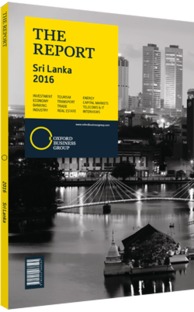Sri Lanka develops new trade agreements
With several free trade agreements (FTAs) in place, Sri Lanka is exploring options for new trade deals and seeking to upgrade at least one existing one. It is also working together with international groupings and is seeking to regain preferential status with the EU. In part, this trend is the result of the change in government and the return to more balanced relationships, while it is also simply the consequence of long-term efforts to improve trading relations with others. However, it is unclear how far agreements will go due to resistance from local professionals.
The country currently has five trade agreements, including bilaterial FTAs with India and Pakistan, a bilaterial preferential trade agreement with Iran and two multilaterial preferential agreements. The latter are the Asia-Pacific Trade Agreement (with Bangladesh, India, Laos, Korea and China) and the South Asian Free Trade Area (with Bangladesh, India, Nepal, Afghanistan, Bhutan, the Maldives and Pakistan). The relationship with India remains the most contentious, though also the most opportunistic.
FTA With India
There is scope for Sri Lanka to tap into regional supply chains, particularly the South India market of around 300m people. However, longstanding historical cooperation – as well as rivalry – has greatly played into public perceptions around a deepened trade relationship with India.
The India-Sri Lanka FTA (ISFTA) has been in effect since 2000, allowing Sri Lankan firms the right to export over 4000 items to India duty-free. A mutually beneficial scenario between a large and small country in this case was established through favourable negative import assignments. India has 429 items on its negative list and Sri Lanka 1180. Despite being on the negative list, garments and tea are allowed into India under a quota system. Since the ISFTA was passed, the impact has been significant. Pre-2000, Sri Lanka’s exports to India averaged $39m. By 2005 they had jumped to $559m, according to the Sri Lanka Export Development Board. While the trade balance has grown in India’s favour, the majority of goods exported from Sri Lanka to India have been under the FTA (whereas only a small percentage of goods from India have received such protection).
In 2013, for example, 65% of goods sent to India by Sri Lanka were sent under the ISFTA; for India the number was 13%, suggesting the trade imbalance results from external factors, such as petroleum prices, and not from the FTA itself. Given the significant size differential, some trade imbalance is largely unavoidable in interconnected economies.
The two countries are working to upgrade their relationship, and a comprehensive economic partnership agreement has been discussed since 2003, but has never been realised, largely dislodged by Sri Lanka’s services sector and vested players in the economy citing national interest.
However, in 2016 an economic and technology cooperation agreement (ETCA) was floated with strong support from Sri Lanka’s private sector, notably its main advocacy group, the Ceylon Chamber of Commerce. The chamber maintains that a liberalised environment for services under a mutually beneficial framework must be pursued, given that Sri Lanka is a comparatively small market with a limited domestic consumption base. From the Sri Lankan side, issues around non-tariff barriers and itemised quotas in India remain critical for future negotiations.
Other Agreements
Other countries are working to sign new agreements with Sri Lanka or expand existing ones. In early 2016, Sri Lanka said it would be upgrading its FTA with Pakistan, with the aim of including investments and services. The two countries have had an FTA in force since 2005. Also high on the agenda for 2016 is the exploration of potential agreements with Singapore, Turkey and China. Furthermore, Sri Lanka has expressed interest in potentially joining the Trans-Pacific Partnership.
You have reached the limit of premium articles you can view for free.
Choose from the options below to purchase print or digital editions of our Reports. You can also purchase a website subscription giving you unlimited access to all of our Reports online for 12 months.
If you have already purchased this Report or have a website subscription, please login to continue.

